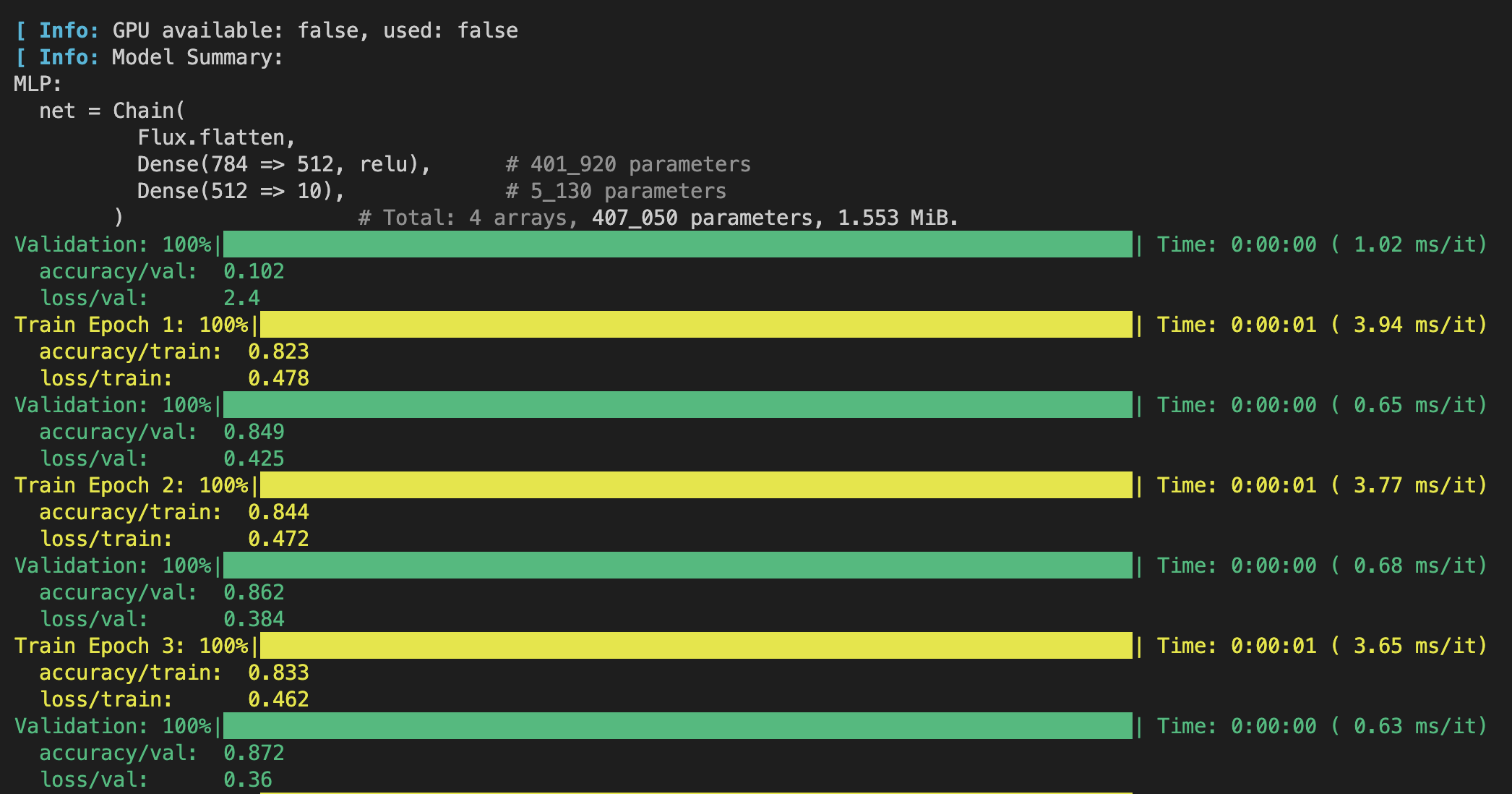A high-level deep learning framework for the Julia language that helps you focus and organize the relevant part of your code while removing the boilerplate.
Tsunami is built on top of Flux.jl and it is heavily inspired by pytorch-lightning (although LightningAI is not involved in this project).
Install Tsunami with
pkg> add TsunamiDefine your model subtyping the FluxModule abstract type, implement a few required methods, then let the Trainer train the model on your dataset with Tsunami.fit. Tsunami will handle all of the boilerplate (training loop, loggin, gpu movement, validation, ...).
In the following script we train a Multilayer Perceptron on the FashionMNIST dataset using Tsunami:
using Flux, Optimisers, Statistics, Tsunami, MLDatasets
using CUDA # or AMDGPU, Metal, ... for GPU support
using MLUtils: DataLoader, flatten, mapobs
## Define the model
mutable struct MLP <: FluxModule
net
end
MLP() = MLP(Chain(flatten,
Dense(28^2 => 512, relu),
Dense(512 => 10)))
(model::MLP)(x) = model.net(x)
function loss_and_accuracy(model::MLP, batch)
x, y = batch
ŷ = model(x)
return Flux.logitcrossentropy(ŷ, y), Tsunami.accuracy(ŷ, y)
end
function Tsunami.train_step(model::MLP, trainer, batch)
loss, acc = loss_and_accuracy(model, batch)
Tsunami.log(trainer, "loss/train", loss, prog_bar=true)
Tsunami.log(trainer, "accuracy/train", acc, prog_bar=true)
return loss
end
function Tsunami.val_step(model::MLP, trainer, batch)
loss, acc = loss_and_accuracy(model, batch)
Tsunami.log(trainer, "loss/val", loss)
Tsunami.log(trainer, "accuracy/val", acc)
end
Tsunami.configure_optimisers(model::MLP, trainer) =
Optimisers.setup(Optimisers.AdamW(1e-3), model)
## Prepare the data
function mnist_transform(batch)
x, y = batch
y = Flux.onehotbatch(y, 0:9)
return (x, y)
end
train_data = FashionMNIST(split=:train)
train_data = mapobs(mnist_transform, train_data)[:]
train_loader = DataLoader(train_data, batchsize=128, shuffle=true)
test_data = FashionMNIST(split=:test)
test_data = mapobs(mnist_transform, test_data)[:]
test_loader = DataLoader(test_data, batchsize=128)
## Create and train the model
model = MLP()
trainer = Trainer(max_epochs=5)
model, fit_state = Tsunami.fit(model, trainer, train_loader, test_loader)What follows is the final output of the script. The script will train the model on CUDA gpus if available and will also write tensorboard logs and and model checkpoints on disk.
See the documentation and check the examples folder to learn more.
- Use
Tsunami.fitinstead of implementing a training loop. - Logging (tensorboard).
- Checkpoints (save and resume training).
- Hyperparameters' schedulers.
- CUDA, AMDGPU, Metal GPU support.
If you want to contribute to Tsunami, please open an issue or a pull request. Any help is appreciated!


